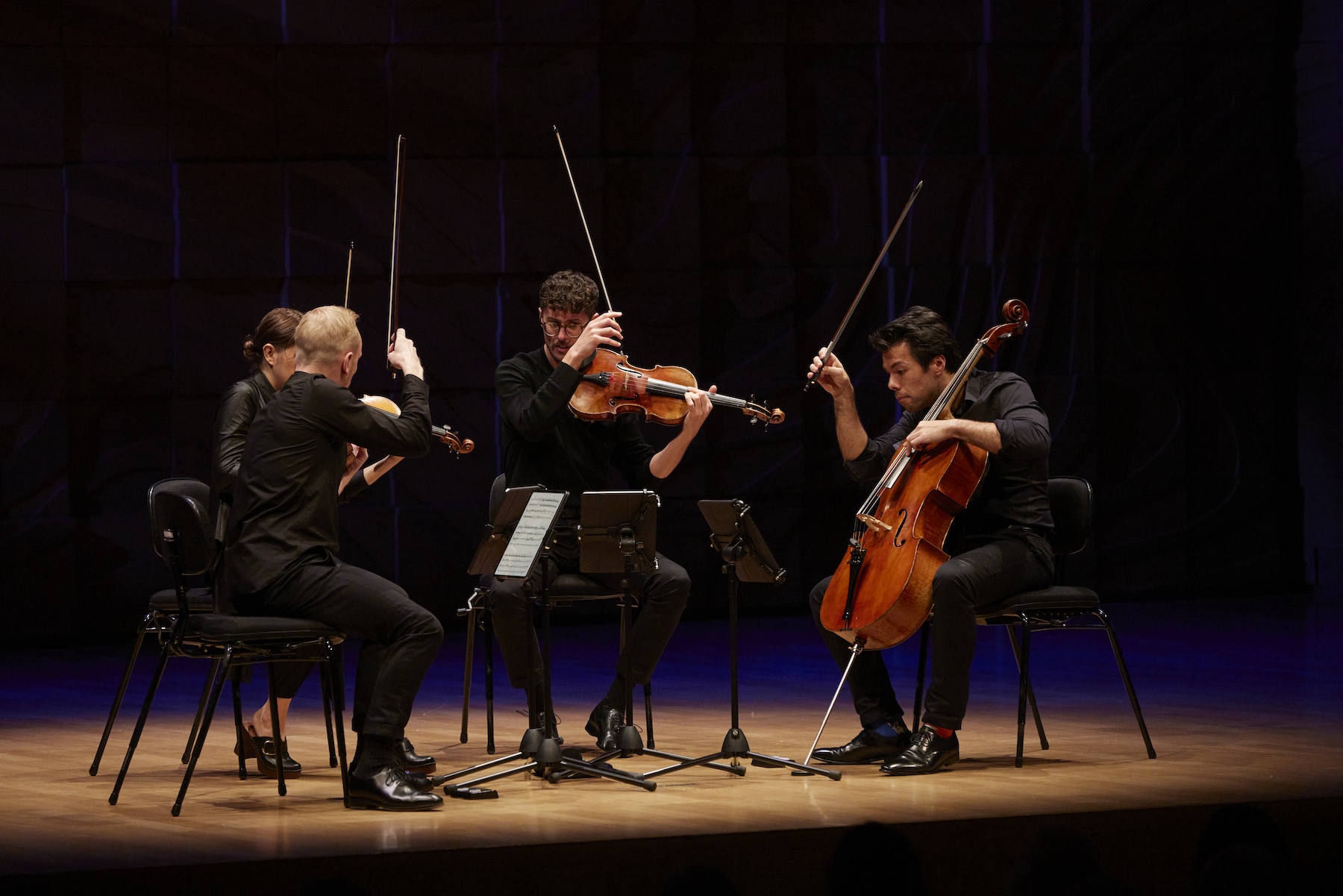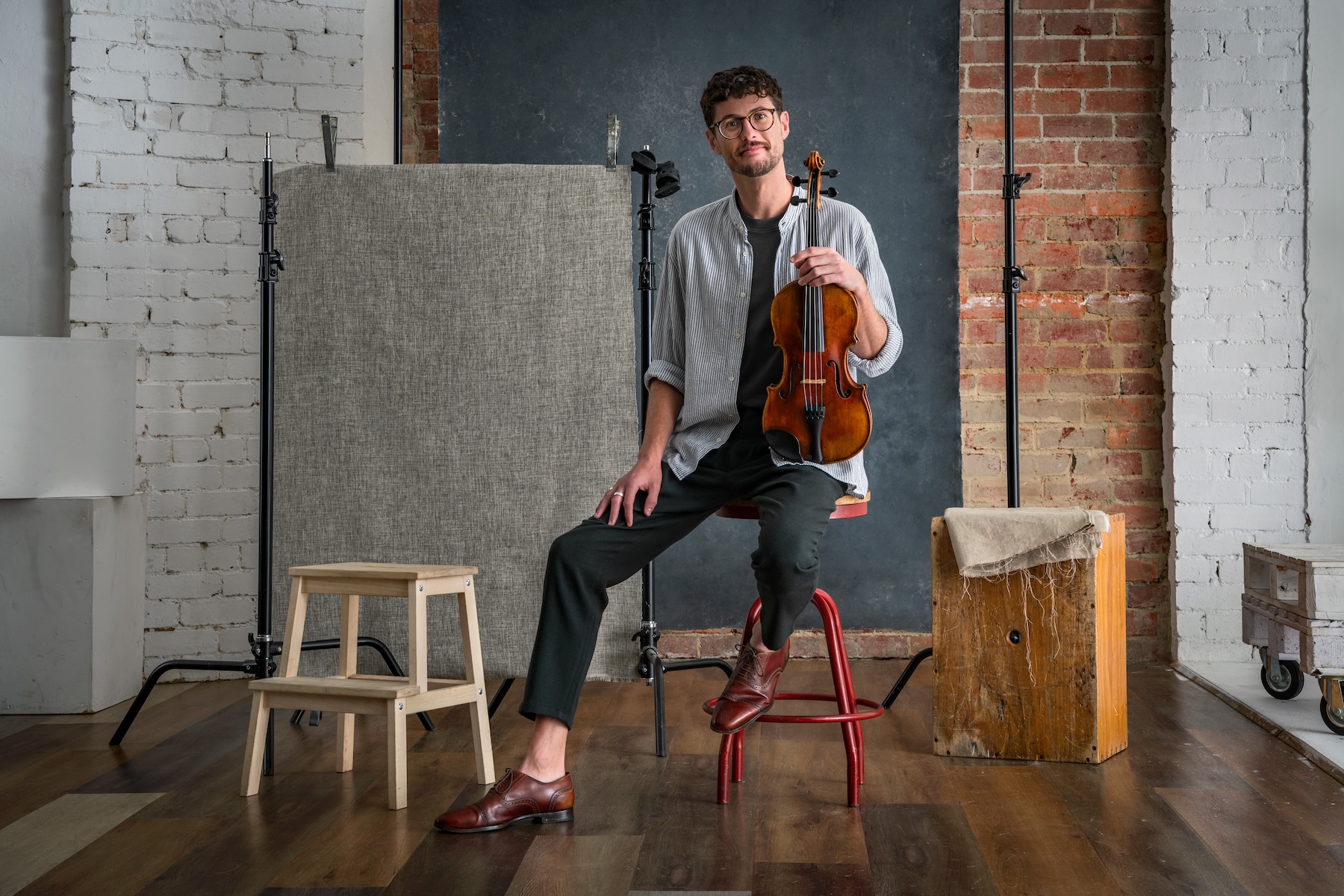‘We are a community’: Australian String Quartet’s 40-year evolution
A Bannon-era initiative to establish a national string quartet has left a unique legacy that its current lineup continues to honour – while finding their own “special chemistry”.

Forty years ago, Adelaide gave birth to something special. In 1985, public mood was on a high with the inaugural Australian Grand Prix, and an arts-minded premier John Bannon was opening his wallet on a raft of initiatives to rekindle the glory days of the Dunstan era.
Bannon initiated a vigorous youth arts policy, threw his support behind establishing Writers SA and Artlab, and laid the way for Australia’s first museum promoting cultural diversity and multiculturalism, the Migration Museum.
Another new venture with Bannon’s backing was the idea of founding a national string quartet. The initial vision was bold: to pursue “excellence in the performance of quality music”, to make “a serious commitment to Australian composers”, to develop “a close relationship with city, as well as country, audiences”, and to involve itself closely with other arts bodies and the educational community.
Upon these foundational objectives, four players were assembled: violinists William Hennessey and Douglas Weiland, violist Keith Crellin and cellist Janis Laurs. With a name like ‘Australian String Quartet’ a lot rested on their shoulders, and they delivered. It was a blisteringly good group from the outset, and on the back of growing national repute it became Quartet-in-Residence at the Elder Conservatorium of Music in 1991.
All these years later, the ASQ finds itself counted as one of the longer lasting string quartets anywhere in the world, and with a reputation to match. With a line-up that is in many people’s eyes the strongest in their history, and a rare set of Guadagnini instruments on permanent loan from UKARIA, the four current players are no longer a local force: they are attracting the ears of the world.
Last year, they distinguished themselves at the String Quartet Biennale Amsterdam with singer-songwriter Lou Bennett in her song cycle ‘Nyilamum’. And just recently this year they performed at Helsinki’s giant Huvila 1400-seat marquee venue in their show Impermanence with Sydney Dance Company and indie musician turned composer Bryce Dessner (The National). Sharing the stage in this were also Grammy -winning mezzo Fleur Barron and international cellist Anastasia Kobekina.

Certainly, life has not all been plain sailing. There have been some painful times for along the way, including in 2006 when the board replaced all four players with Sydney’s Tankstream Quartet following internal dissention. Then in 2014, irreconcilable artistic differences led violinists Kristian Winther and Iona Tachenover’s exit – and the bad blood was plain to see in Scott Hicks’ 2015 film, Highly Strung.
You might like
However, the ASQ has long since put those experiences behind them. The players and board are happily in harness, and Angelina Zucco, the quartet’s longstanding executive director, is all smiles about where the group finds itself.
While Zucco is personally reticent to draw comparisons, she speaks with pride about how current lineup – violinists Dale Barltrop and Francesca Hiew, violist Christopher Cartlidge, and cellist Michael Dahlenburg – is playing “at a level that makes us proud”.
“The current line-up has a special chemistry. I’ve loved every line-up, and with each single change in personnel it becomes a new quartet. All along though, we aspire to be world-class.”
As Australia’s only full-time salaried string quartet, Zucco says the ASQ possesses unique strengths. Principally, these come from the ensemble’s ability at relationship-building and its growth at the grassroots level.
"The current line-up has a special chemistry. I’ve loved every line-up, and with each single change in personnel it becomes a new quartet. All along though, we aspire to be world-class."
“What holds us together is that we are a community, a huge network. We are a community model more than an organisational structure,” she says.
However one looks at it, the ASQ does have an unusual structure. Unlike virtually any other string quartet in existence, the players are appointed by a board, and administration takes care of all day-to-day running of the group.
“It’s a pretty unique thing in the world,” Zucco reflects. Only the Kronos Quartet in the US and a government-funded quartet in The Netherlands bear any similarities to the way the ASQ operates, she says.
But what matters is the group’s ethos, she says, and this rests on the same set of principles upon which the quartet was founded.
“Our foundational DNA remains at the heart of who we are as an organisation,” says Zucco.
Subscribe for updates

Christopher Cartlidge is the ASQ’s newest player, taking over from Stephen King during the pandemic.
“I don’t think of myself as new anymore”, Cartlidge tells InReview.
Despite the backdrop of Covid-19, Cartlidge says his induction into the quartet was a smooth one thanks to his prior experience with many of its past and present members. His teacher, Josephine St Leon, had herself learned from Keith Crellin, and as a student Cartlidge studied under Hennessy at ANAM (Australian National Academy of Music) where he met Hiew and Dahlenburg.
“I have immense respect for my predecessors and ASQ’s community of musicians,” he says.
Cartlidge says the ASQ are fortunate to escape the day-to-day pressures that other quartets have to face just in order to survive.
“Full-time quartets exist in a bit of a spectrum,” he explains. “Some have teaching positions, residencies, or perhaps an orchestral position, but this is quite rare for us. We are very fortunate that we don’t have to support ourselves doing other things.
“We have the privilege of being able to sit down and say what we want to do, rather than what we have to plan. And we have the good fortune of being able to ask which composers we would like to write for us.
The ASQ will celebrate 40 years of existence with an all-ages community event called ‘Big Gig’, to be MC’d by Jane Doyle and taking place across the afternoon and evening of Sunday September 28 at Adelaide Town Hall.
“We open the doors to the whole community,” says Zucco. “There will be three public performances by the ASQ, and in between people can see films, exhibitions, and hear young quartets playing throughout the day.”
These younger groups are the Mahogany Quartet from AdYO (Adelaide Youth Orchestra), OMA Quartet from the Elder Conservatorium’s Open Music Academy, and two other fine student groups from the Con, namely Montana Quartet and Vanya Quartet.
The ASQ will then return to touring, with their next concert ‘Convergence’ performed on October 16 at UKARIA and October 17 at Elder Hall, featuring works by Stanhope, Britten and Schubert’s ‘Death and the Maiden’ quartet.
On the subject of ‘convergence’, Cartlidge says that the luxury of playing together so intensively allows the group to think and play in effect as one person, not four.
“I remember hearing the Emerson Quartet [in] 2017 playing Dvorak and Schubert, being blown away by the fact that they breathed together,” he says.
“It only happens when musicians are together as much as they or we are. We are passionate about what that means. It is always fun playing with colleagues, but it is different when you know exactly how they are going to play the music.”
Australian String Quartet present their Big Gig on Sunday September 28 at Adelaide Town Hall. Convergence will be performed in Adelaide on October 16 and 17 before touring nationally.
Free to share
This article may be shared online or in print under a Creative Commons licence

